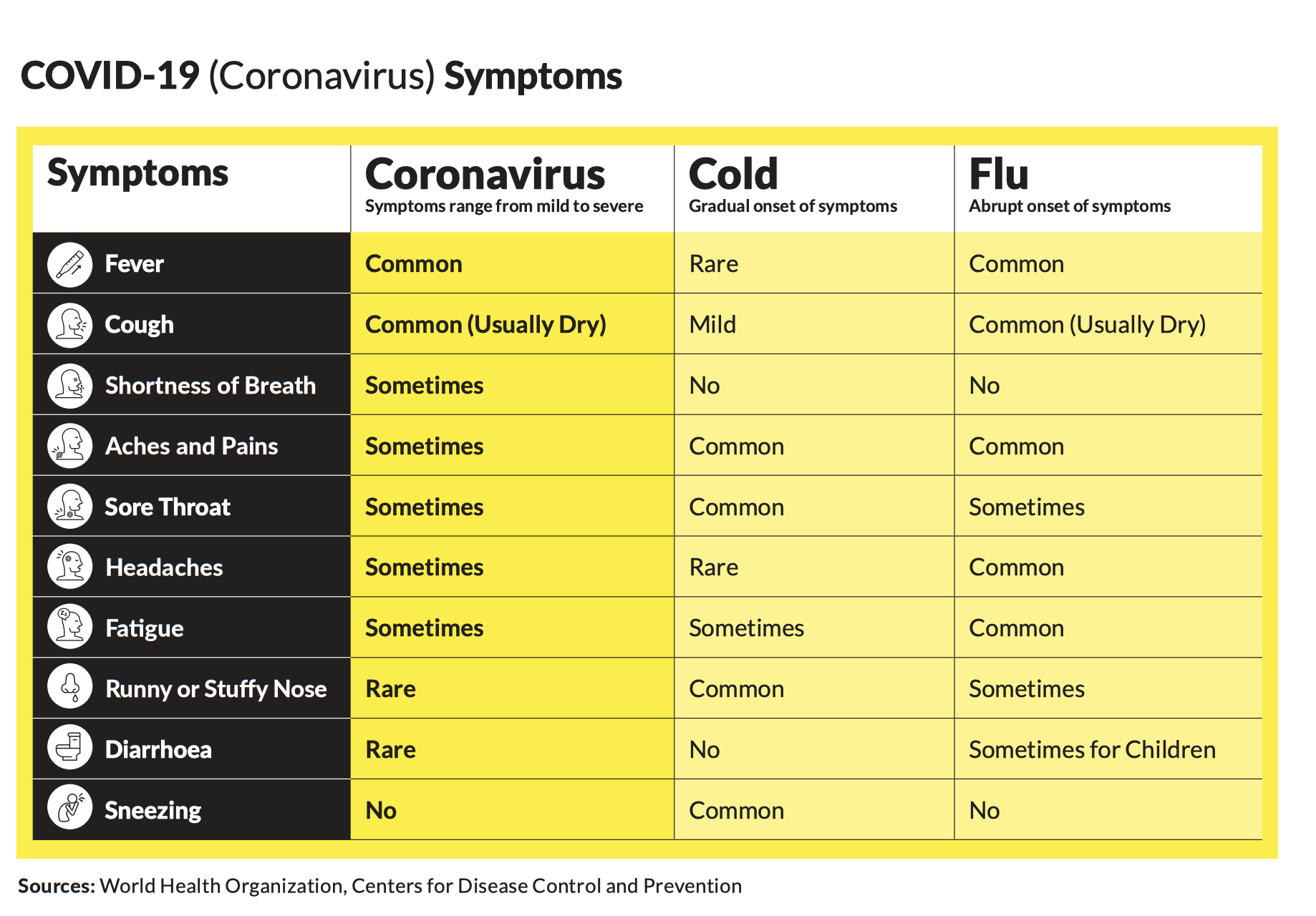Suspected/Confirmed Case of COVID-19
If someone becomes unwell in the workplace with symptoms such as cough, fever, difficulty breathing, the COVID-19 Compliance officer/first aider should isolate the employee by accompanying the individual to a designated isolation area keeping at least 2 metres away from the symptomatic person and also making sure that others maintain a distance of at least 2 metres from the symptomatic person at all times. The unwell individual should be provided with a mask if available. In the event of a worker either being a suspected/ confirmed case of COVID-19 or aknown “close contact” with a confirmed or suspected case, this protocol must be followed to ensure they are fit to return to work by means of self-declaration.
Fitness for Work should be considered from two perspectives:
- Does their illness pose a risk to the individual themselves in performing their work duties?
- Does their illness pose a risk to other individuals in the workplace? The following steps should be followed, inline with current advice from the HSE :
-
- Any worker who has displays symptoms consistent with COVID-19 must stay away from work, self-isolate and contact their GP by phone as part of the triage process.
- They must also notify their Line manager who in turn must notify HR/ EHS. An individual will be classified as either a suspected orconfirmed case, based on the HSE decision to test / outcome of test.
- An individual who is a known close contact [2] with a confirmed or suspected case will be contacted by the HSE through its contact tracing process. Advice regarding self-isolation for a period of 14 days since their last “close contact” with a confirmed/suspected casemust be followed.
- An individual must only return to work if deemed fit to do so and upon approval of their medical advisor and having coordinated withtheir Line Manager/HR/EHS.
- When an individual is symptom-free and are deemed fit to return to work, the key criteria are:
-
-
- 14 days since their last “close contact” with a confirmed/suspected case and have not developed symptoms in that time, or
- 14 days since the onset of their symptoms and 5 days since their last fever (high temperature), or
- They have been advised by a GP / healthcare provider to return to work.
- Line Manager/designated Employer/HR should confirm the relevant criteria above with the individual and write down their responses.
- Individual must self-declare their fitness for work in the absence of having a fitness for work certificate from their GP/healthcareprovider. This is in acknowledgement that GP’s don’t currently have capacity to be issuing return to work certificates.
Close contact is defined by the HSE as spending more than 15 minutes face-to-face contact within 2 metres of an infected person /living in the same house or shared accommodation as an infected person. [This is only a guide].
First Aid
First Aid Responders should be familiar with the below

Key Control Measures
- Standard infection control precautions to be applied when responding to any first aid incident inthe workplace. Hand washing with warm water and soap or an alcohol-based hand gel must be performed before and after providing any first aid treatment.
- Any person presenting with symptoms consistent with COVID-19 should be treated as a suspected case.
- In such cases, move individual to a first aid room / isolated room to minimise risk of infection to others.
- Only one First Aid Responder to provide support/ treatment, where practical.
- Additional PPE (enclosed eye protection/visor and FFP3 mask if available) should be worn by First Aid Responders when responding to all firstaid incidents where close contact cannot be avoided. Please also have a mask available to give to person if they are displaying symptomsconsistent with COVID-19 to limit droplet dispersion.
- If you suspect a person has experienced a cardiac arrest, do not listen or feel for breathing by placing your ear and cheek close to the person’smouth. If you are in any doubt about confirming cardiac arrest, the default position is to start chest compressions only until help arrives. To re-iterate the point, a person in cardiac arrest should have compression only CPR applied until an appropriately fitting BVM (Bag Valve Mask) facemask is available for ventilations.
- Persons with minor injuries (cuts, abrasions, minor burns) – where practical, a First Aid Responder should avoid close contact and advisethe injured party what steps to take in treating their injury.
- No reusable equipment should be returned to service without being cleaned/disinfected appropriately.
PPE Requirements
The following PPE must be available for responding to first aid incidents:
- Disposable gloves (nitrile/latex)
- FFP3 masks /Full Face Visor
- Disposable plastic aprons
- Enclosed eye protection
- First Aid Responder must ensure that the mask covers both the mouth and nose and is fitted correctly to create an adequate seal to the face.
- Following first aid treatment, disposable PPE and any waste should be disposed of appropriately and reusable PPEcleaned/disinfected thoroughly.
- Wash hands thoroughly with warm water and soap before putting on and after taking off PPE.
- Replenish PPE stock as appropriate.
